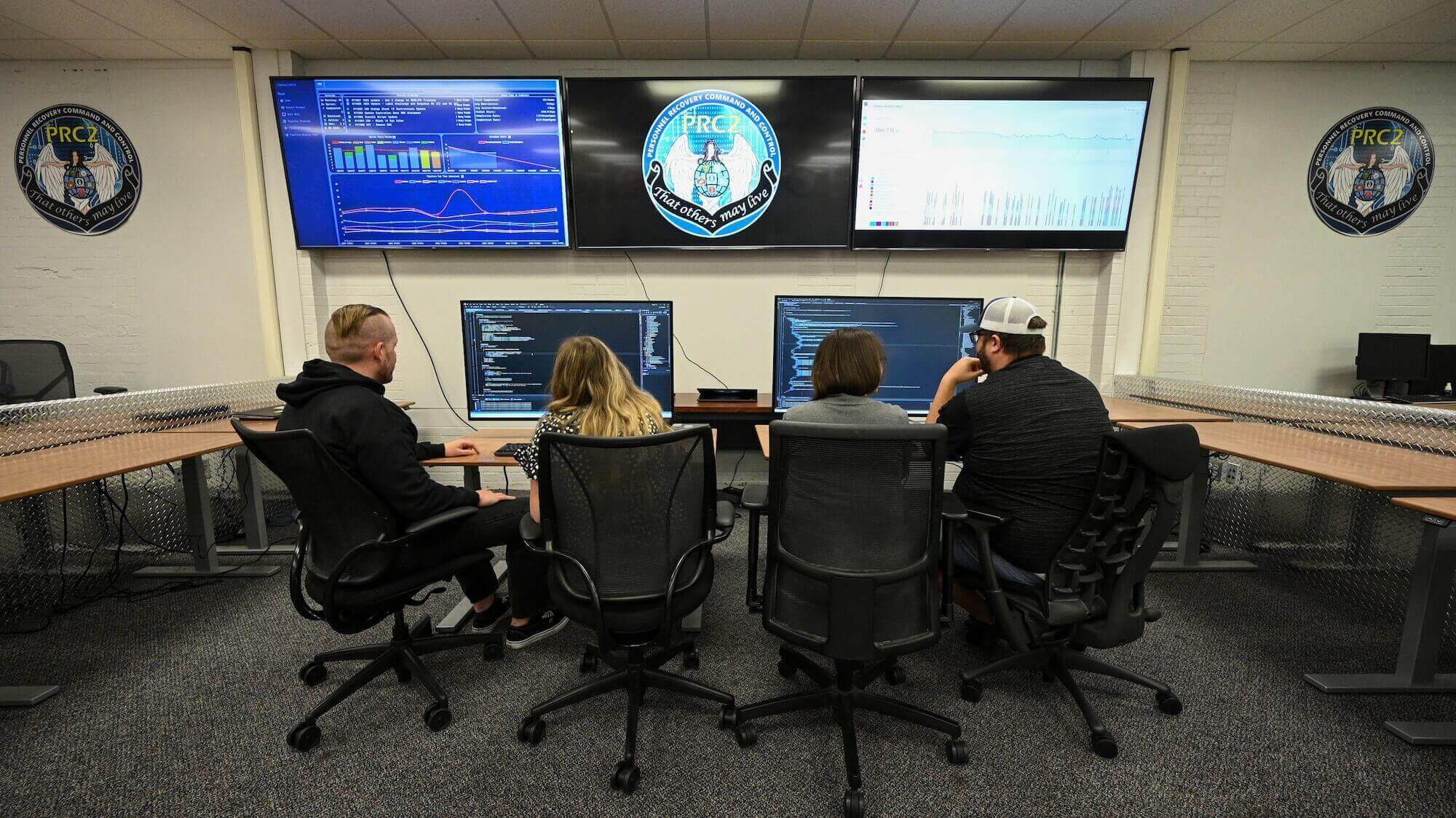
Software engineers complete 100 sprints; continue racing
HILL AIR FORCE BASE, Utah – A team of Hill software engineers, working Personnel Recovery Command and Control, is producing computer code that helps the warfighter and they’re doing it at record speed, within a two-week window called a sprint.
The code they produce supports a joint surveillance electronic tracking system that helps the Department of Defense and other government agencies retrieve people who have become isolated down range or in an area of responsibility.
Scott Vigil, 517th Software Engineering Squadron, PRC2 flight director said what they do is personal because the result of their efforts helps get people home.
“We want to give those who are protecting us, the best tools available to be sure they come home,” he said. “The person getting home is what matters and motivates us to do what we do.”
In an effort to reduce the 18-month timeline needed to employ important code changes, the local software program office recommend a shift to industry standard agile software development.
The concept is to break down development into small pieces and present that to the customer, who prioritizes what’s most important.
Then, the team fast-tracks developing code into these smaller pieces during a two-week window, called sprints.
“We have our user requirements and we refine them to make sure we deliver the value wanted,” said Kristen Keyes 517 Software Engineering Squadron, PRC2 project director. “At the end of the two-week sprint, we have a deliverable product that has gone through test, security scans and our pipeline to make sure we’re delivering the best product to our customers.”
This team recently delivered their 100th code package, helping the warfighter return to safety.
“It’s significant that we’ve accomplished this 100 times because it used to take about 414 days to field a large software change,” said Brian Zwerdling, PRC2 section chief. “Besides the obvious drawback of taking more than a year to get a product to the end user, their requirements are going to shift and change. Now, when something happens in the war zone that requires quick changes through our software, we’re able to adapt to that and always present the most recent information to the personnel recovery enterprise.”
Zwerdling said a lot of innovation has gone into streamlining the process, including people thinking faster and utilizing tools better.
The team has adopted automated software and testing tools in a cloud-based system that cut the former testing time of 6-9 weeks to less than 30 minutes.
“What we’ve tried to do is stay on the cutting edge of all modern technology type tools used industry wide,” Vigil said. “We’re using the same tools as Google, Facebook and Amazon and we’re using their development process.”
Staying ahead of aggressive cyber attacks, to keep personal information safe, is another important part of the job.
“Every day is a challenge to make sure we’re not getting hacked and we’re protecting our networks,” Zwerdling said. “It’s more than that. We’re also protecting the personnel records of anyone in the system, and there’s 2.3 million records out there. We don’t just check it once and we’re done. We check everything constantly.”
This team is proud of everything they’re accomplished in working up to and achieving the 100 sprint mark, because they’re helping people have the best opportunity to return home.
“All of this ties into these people going back home,” Zwerdling said. “We all take that very seriously. That’s what’s important to them and what’s important to us. We’re not just focused on this last 100 sprints, we’re focused on the next 100 sprints, for them.”